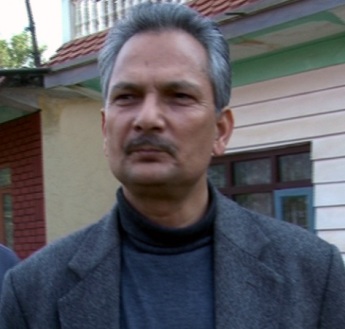By Shastri Ramachandaran*
IDN-InDepth NewsViewpoint
NEW DELHI (IDN) – Multi-party democracy was born in Nepal in 1991 – after a popular uprising forced an autocratic king to make way for a constitutional monarchy. This year, 21 summers after an interim coalition government presided over the Himalayan kingdom’s first multi-party elections, Nepal should have come of age as a democracy, as a republic.
Unfortunately, the nascent democracy never grew up. It remains a stunted, retarded caricature of electoral democracy with institutions such as parliament, the election commission and Supreme Court standing as tragic reminders of their irrelevance. The so-called ‘Republic of Nepal’ is bereft of life breath, namely, a constitution. There is no government, at least not a legitimate one.
The Federal Democratic Republican Alliance (FDRA) government of Prime Minister Baburam Bhattarai is an opportune coalition of the Maoists and the Madhesi parties. It has no basis in a constitution (because there is none), in an elected parliament (because there is none) or even in vague alibis such as ‘pleasure of the President’. It has no sanction from the people either. The government is taken to be the government because those who style themselves the government are occupying the governmental structures. In short, the government is hostage to a self-appointed group.
Nepal is a non-democracy if ever there was one.
Moribund, mutilated, dismembered – not anarchy – are the words that come to mind when reflecting on Nepal’s polity. Anarchy is vibrant, seething with chaotic energy, churning with ideas and possibilities, and it holds out at least the promise of something radically new.
The last elected parliament, in 2008, converted itself into a Constituent Assembly (CA) for drafting and delivering a new constitution. Far from attending to this task, there followed a succession of governments and prime ministers elected on the floor of the house. The CA failed to come up with a constitution within the stipulated two years, and kept extending its term until Nepal’s Supreme Court, and President, called an end to this charade. The CA was dissolved seven months ago.
The reason appeared to be differences on some of the provisions relating to federalism. It is a moot point whether the ruling coalition headed by the Maoists and the opposition – each for their own self-serving reasons – scripted such an outcome.
Regardless, after the sound and fury of hostilities died down, the parties realised that they had to begin talking and come to some agreement. Falling back on the fiction of an ‘interim constitution’ – after all some basis was required to break the constitutional, electoral, political and legal impasse – the parties agreed on elections, which was scheduled for November 22. But November 22, like all other deadlines which Nepalese politicians have failed to meet, too, passed the benighted country without any change for the better.
At issue is how to clear the decks for holding elections. Now Nepal’s political parties agree that a new Constituent Assembly must be elected within six months from November 22. Unless a new CA is elected, there can be no constitution. But the interim constitution does not have a provision for electing a second CA. This deficiency can be addressed by “amending” the constitution. The person who can do so is President Ram Baran Yadav. He has already courted controversy by the steps he proposed for resolving the stalemate.
He can invoke his constitutional power to “remove obstacles” – towards holding an election – but on the advice of the cabinet. In the prevalent situation, acting on the FDRA government’s recommendation is fraught with risks. Therefore, President Yadav wants all parties to arrive at an explicit consensus in favour of his exercising this extreme option.
The opposition, comprising the Nepali Congress (NC) and the Unified Marxist Leninist (UML) party are willing to enable a consensus and clear the way for elections only if they get to lead the government. The FDRA is asking them to come on board the Bhattarai-led coalition and make it a national government. The NC is unwilling to do this and wants Sushil Koirala as the prime minister.
The NC and UML accuse the FDRA of resisting a change of prime minister to thwart elections. The Maoists suspect that once Koirala becomes prime minister with UML support, the two parties will not hold elections to the CA.
What emerges is that all parties want to be in government without elections. All of them are fearful of going back to the people for a fresh mandate. Therefore, none of the parties may hasten to clear the ground of obstacles for holding elections in April 2013.
*The author, an independent political and foreign affairs commentator, has covered events and developments in Nepal for over 20 years. He is co-editor of the book State of Nepal. This article first appeared in DNA-Daily News & Analysis [IDN-InDepthNews – December 17, 2012]
2012 IDN-InDepthNews | Analysis That Matters
Photo: Prime Minister Baburam Bhattarai | Credit: Wikimedia Commons
The writer’s previous articles in IDN:
http://www.indepthnews.info/index.php/search?searchword=shastri%20ramachndran&ordering=newest&searchphrase=any
Send your comment | Subscribe to IDN newsletter
Follow us on Twitter and Facebook:
http://twitter.com/InDepthNews
http://www.facebook.com/IDN.GoingDeeper

